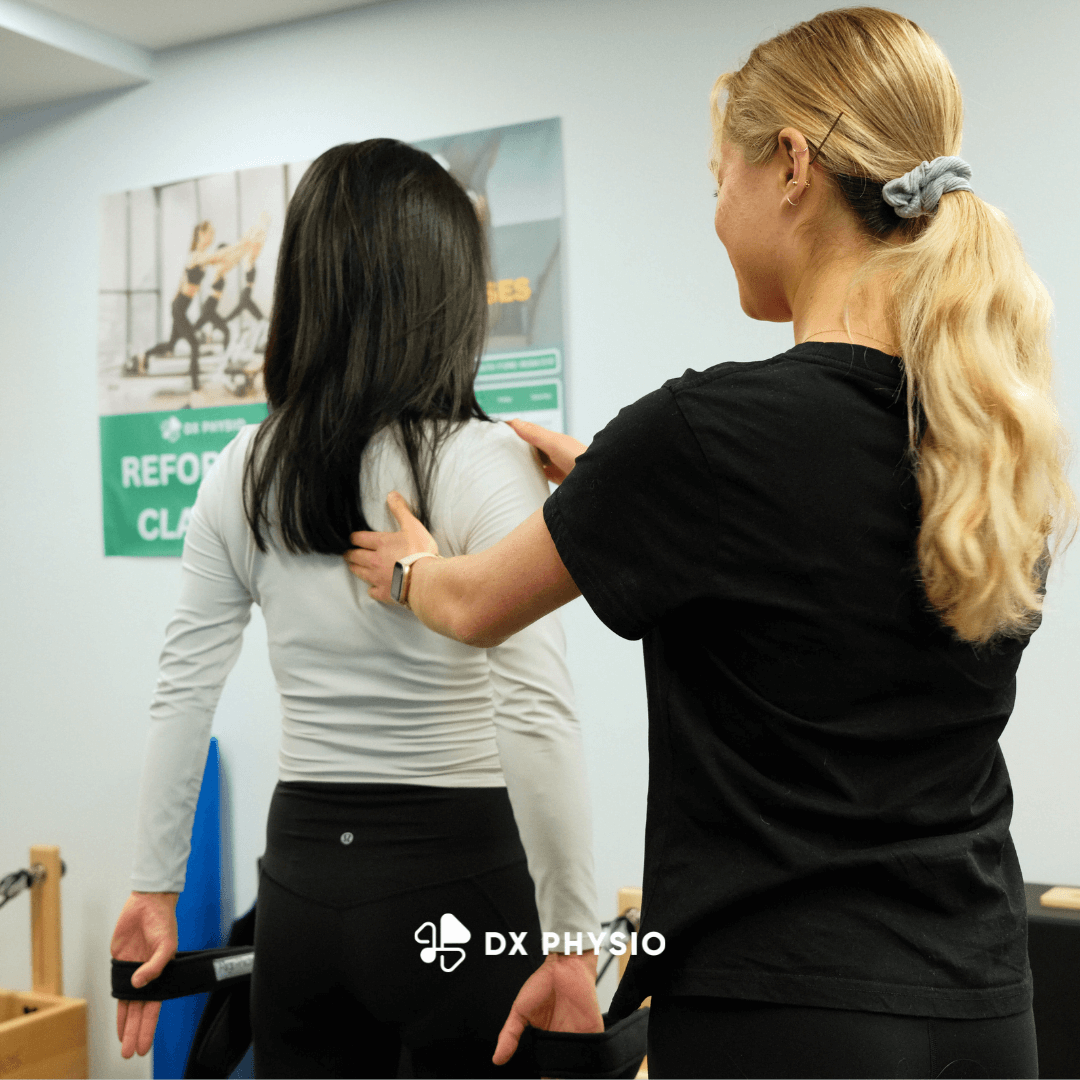How common is DRA?
DRA is extremely common. Evidence shows that almost 66%-100% pregnant women experience DRA during the third trimester.
The good news is that 60% women can regain the elasticity of the linea alba and abdominal muscles and close the gap between the two halves of the rectus abdominis within 6-12 weeks after giving birth. However, there are still around 40% of those who still have DRA at six months postpartum, or longer.
What are the risk factors for developing diastasis recti?
- Having multiple pregnancies (especially back-to-back)
- Age> 35 years old
- Having multiples (such as twins or triplets)
- Having a heavy or big baby
- Being extremely petite
- Vaginal delivery – pushing can increase abdominal pressure
What are the symptoms of DRA?
- Weak abdominals
- ‘Doming’ or ‘bulging’ when you increase abdominal pressure
- Low back pain / pelvic / hip pain
- Poor posture
- Pelvic floor related dysfunction
How to treat DRA?
At DX Physio, we recommend our clients to get a thorough pelvic floor and abdominal wall assessment 4-6 weeks after giving birth. We use a real-time ultrasound and manual assessment to examine the abdominal wall, breathing pattern, linea alba integrity, abdominal muscle activation as well as pelvic floor function.
Based on our experience, the sooner new moms start the intervention for DRA, the better the outcome will be. We will help you to rebuild your core strength and close the gap between the Rectus Abdominis muscle. We also recommend that pregnant women start to strengthen their core muscles during their pregnancy to increase or maintain the strength of their abdominal muscles throughout their pregnancy.
Book with us today and get your first post-natal assessment with our experienced Women’s Health Physiotherapist!
























